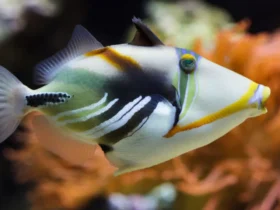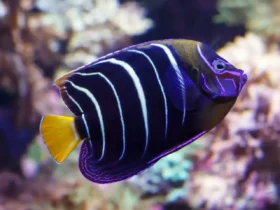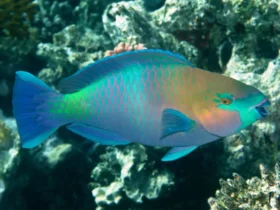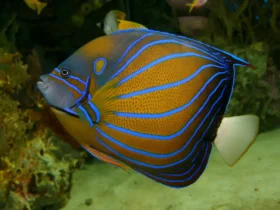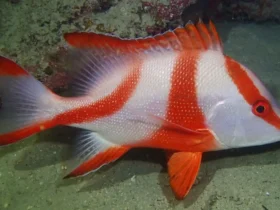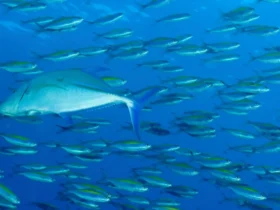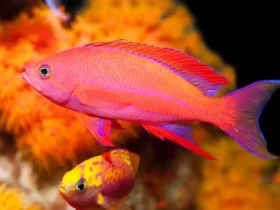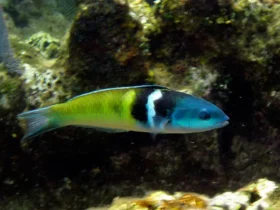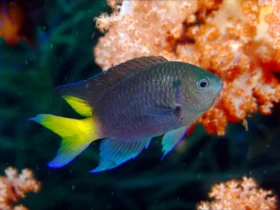In the vibrant and diverse world of coral reefs, a fish adorned with fiery hues and captivating behavior commands attention—the Flame Hawkfish. With its striking red-orange coloration and unique perching behavior, this small but mighty fish adds a touch of brilliance to the underwater landscapes. In this article, we will explore the captivating world of Flame Hawkfish, delving into their appearance, habitat, behavior, and the importance of conserving these remarkable creatures.
Flame Hawkfish images
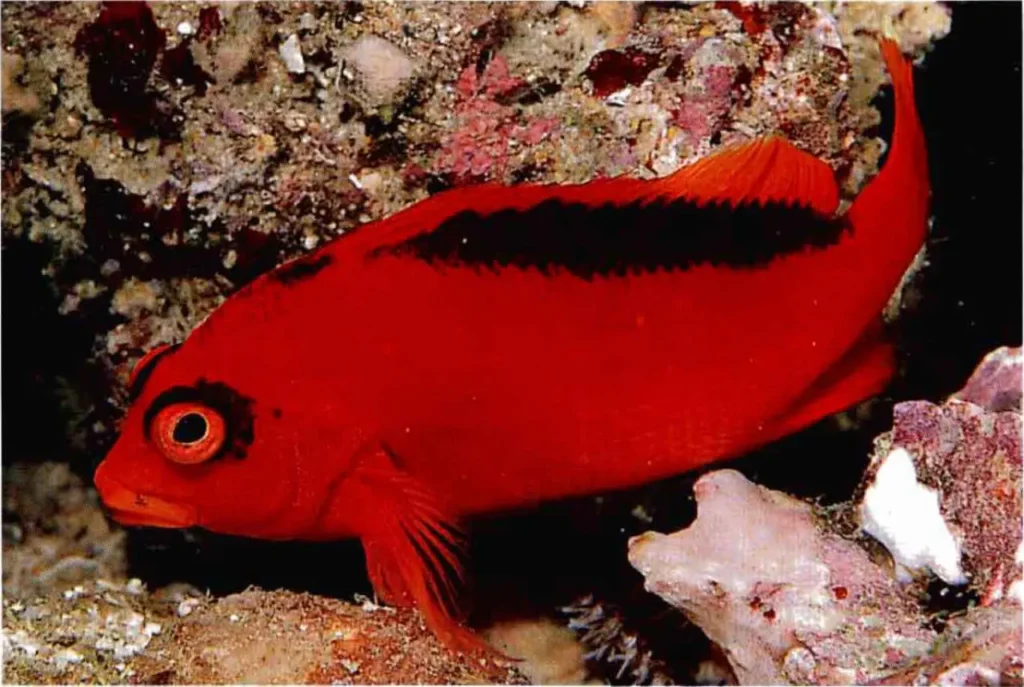
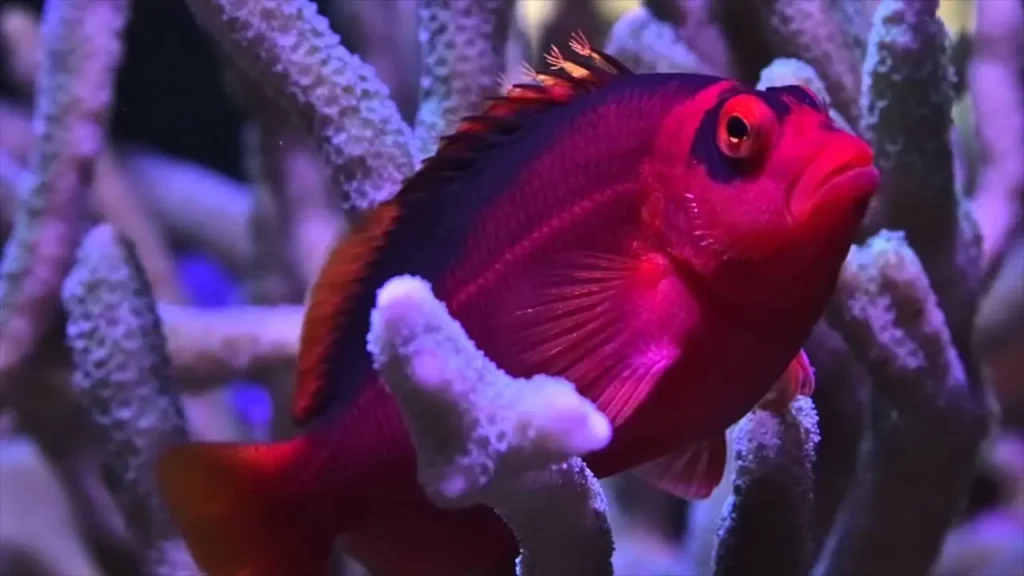
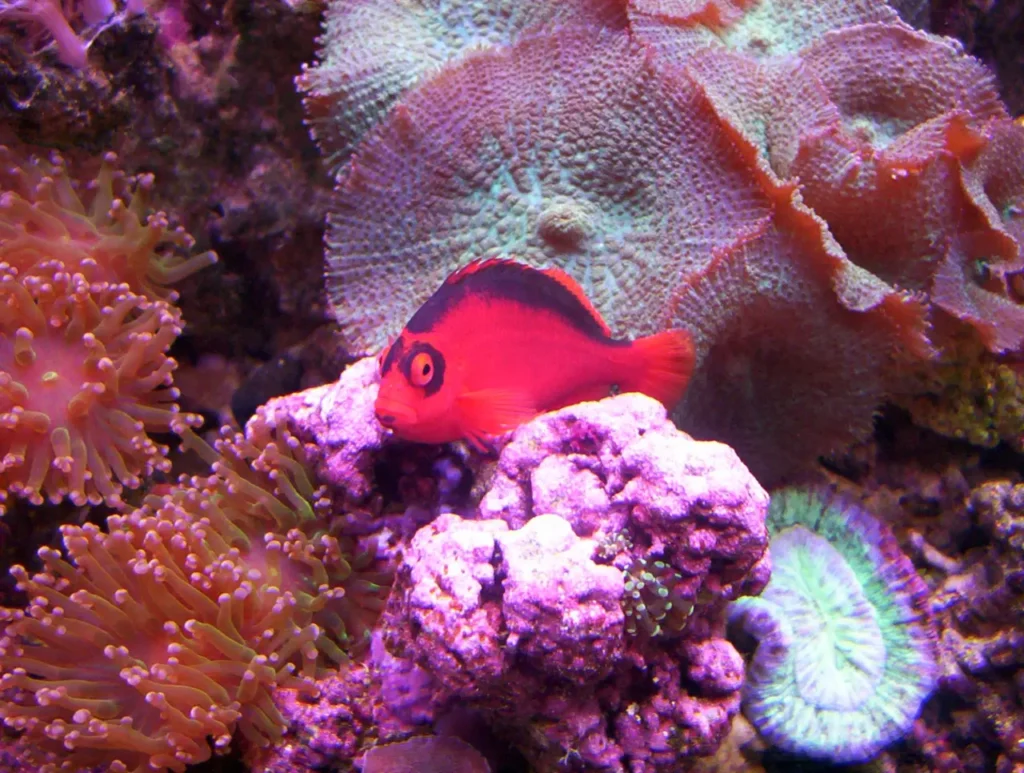
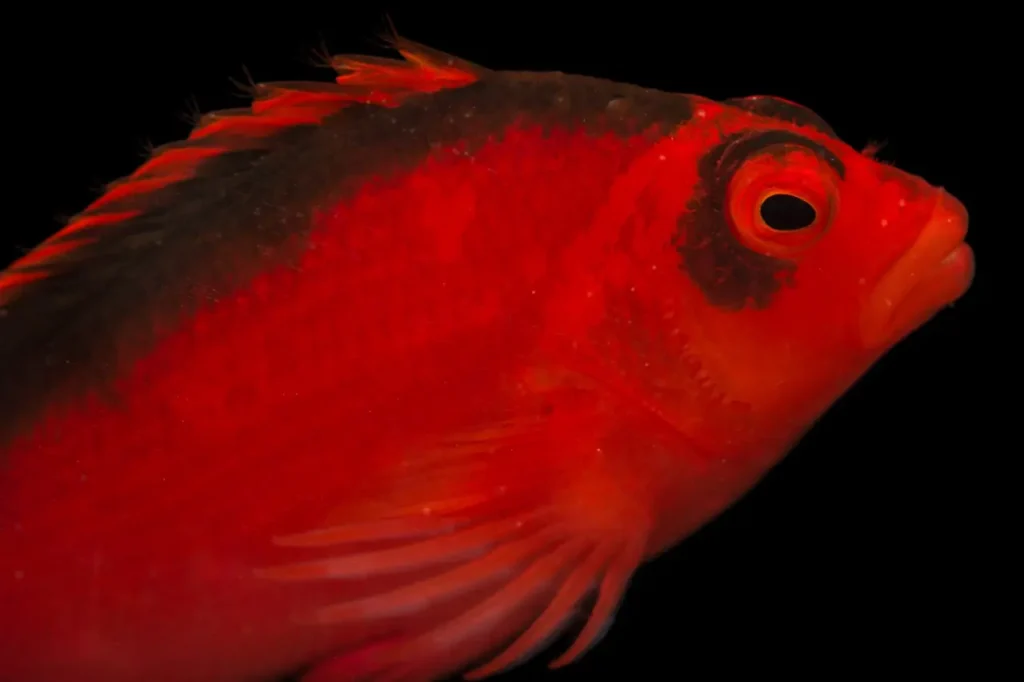
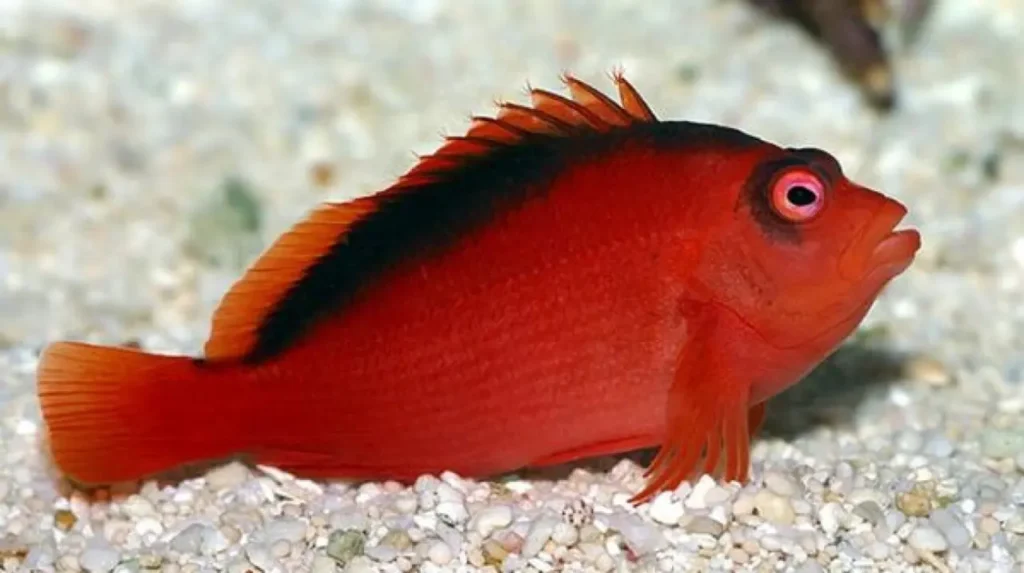
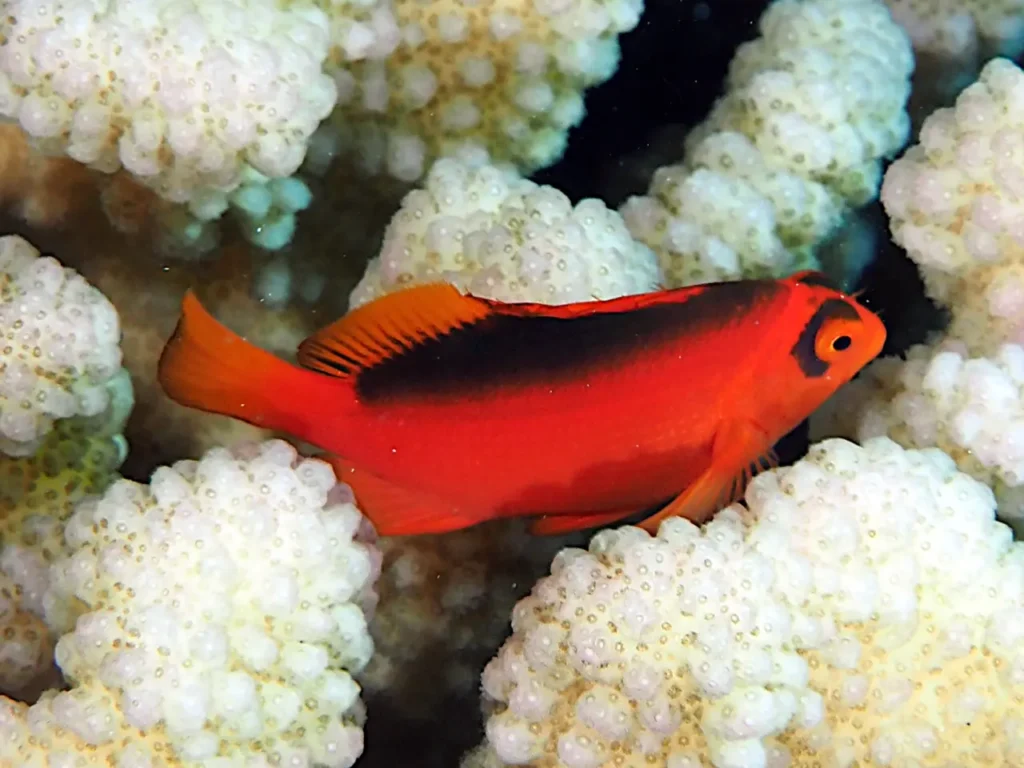
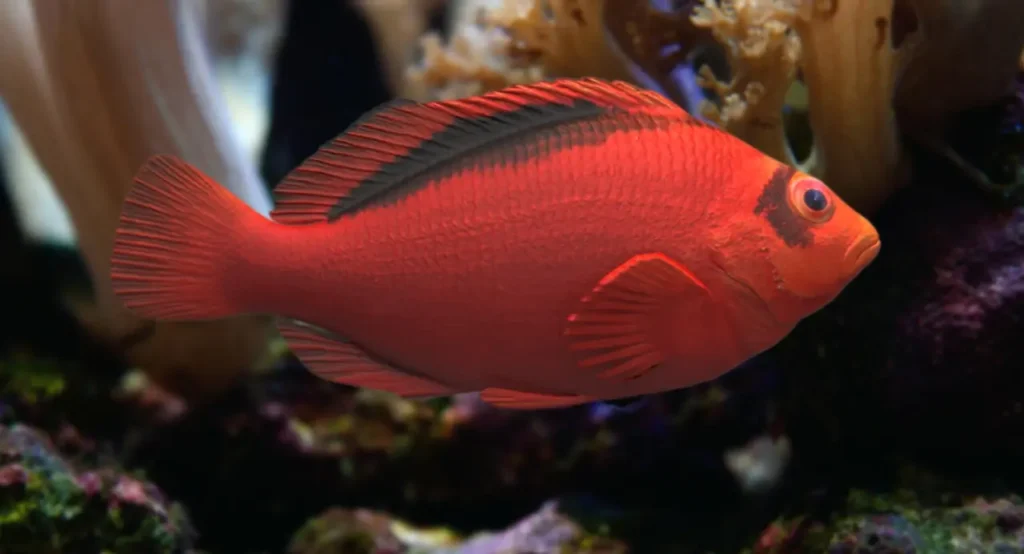
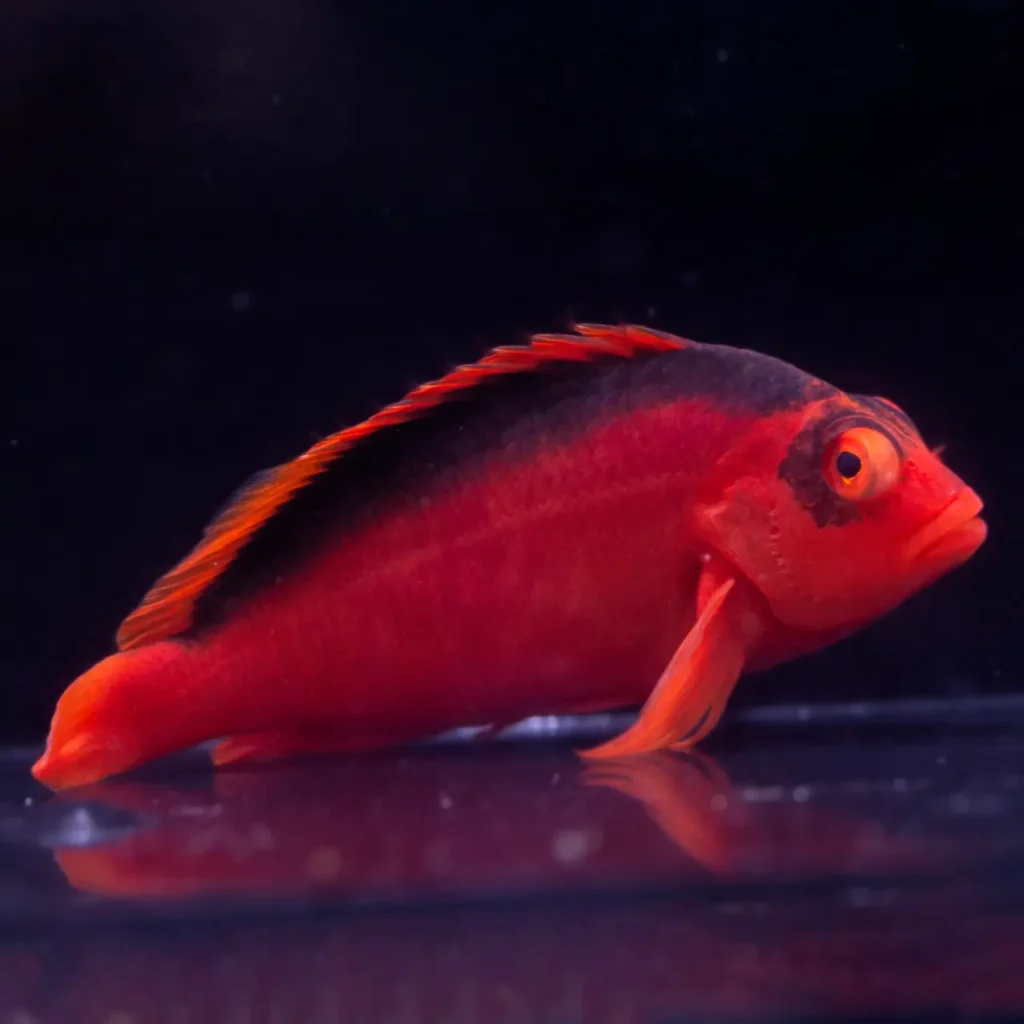
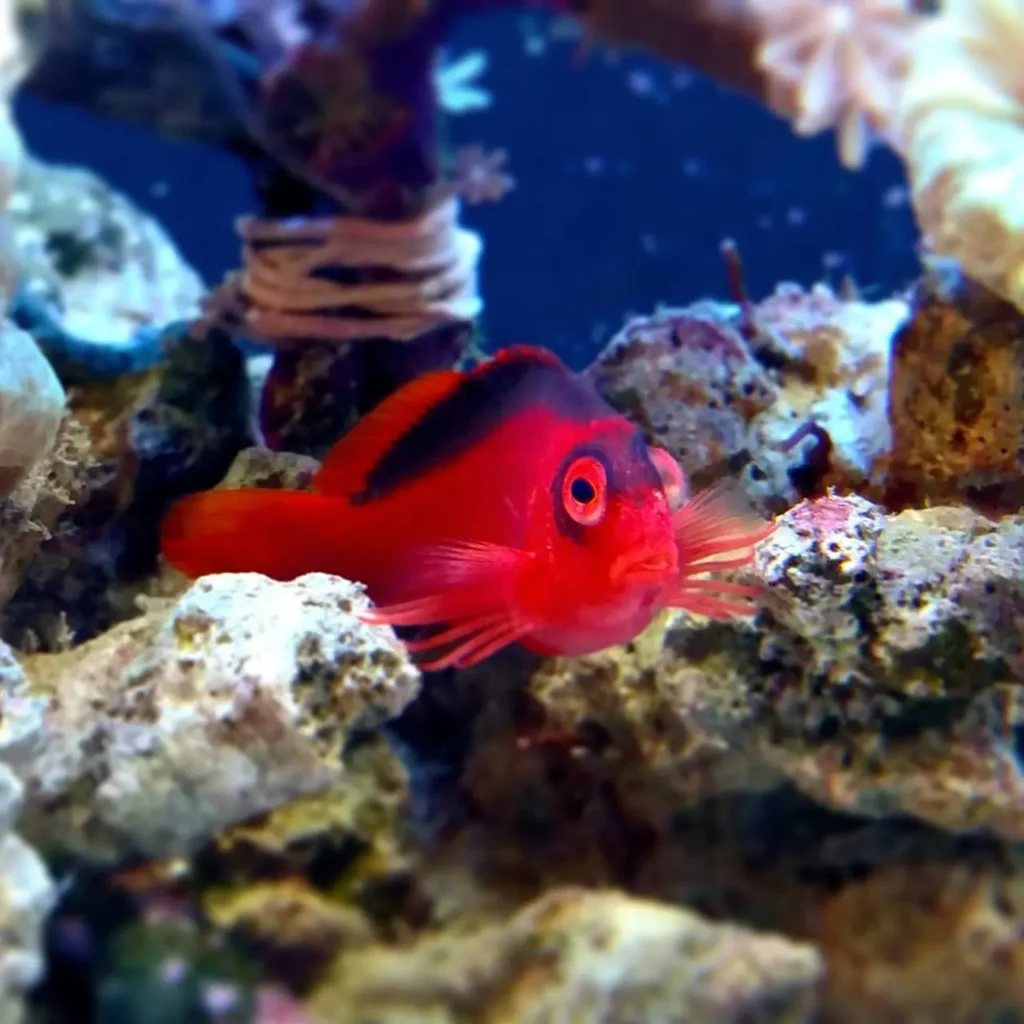
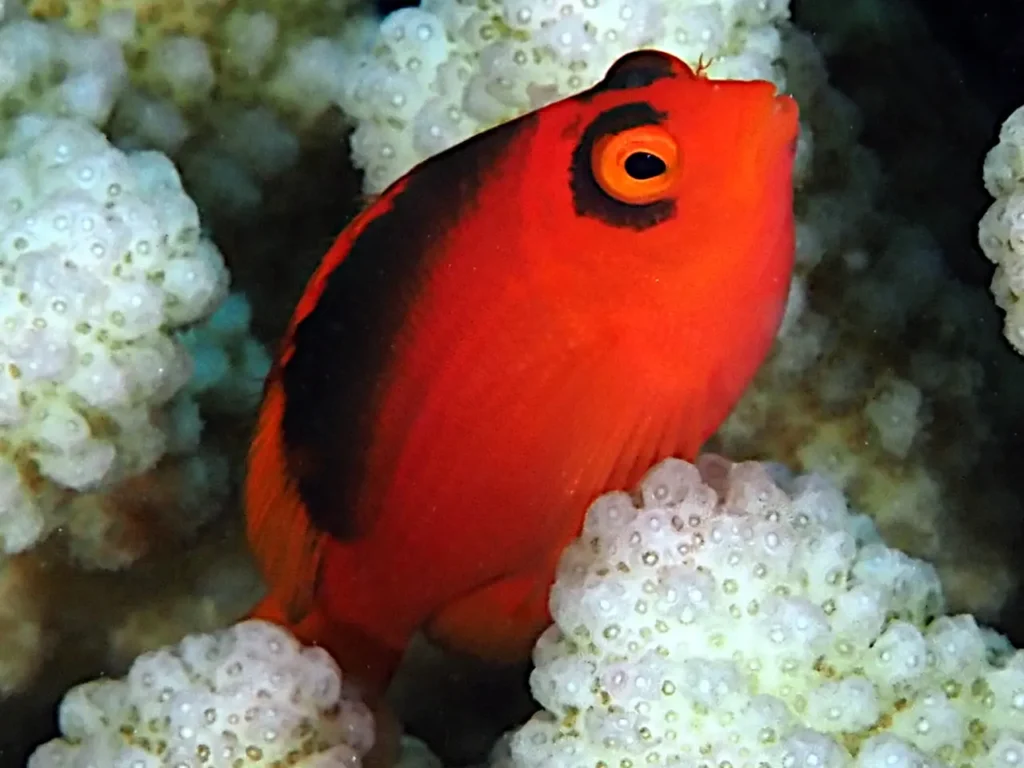
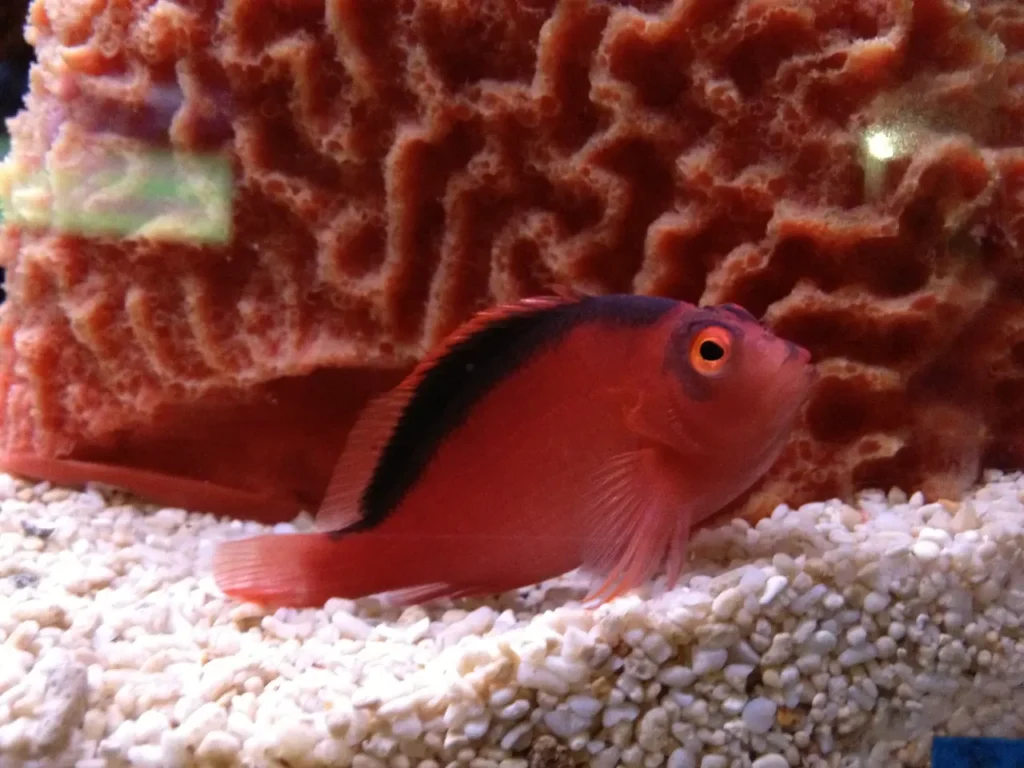
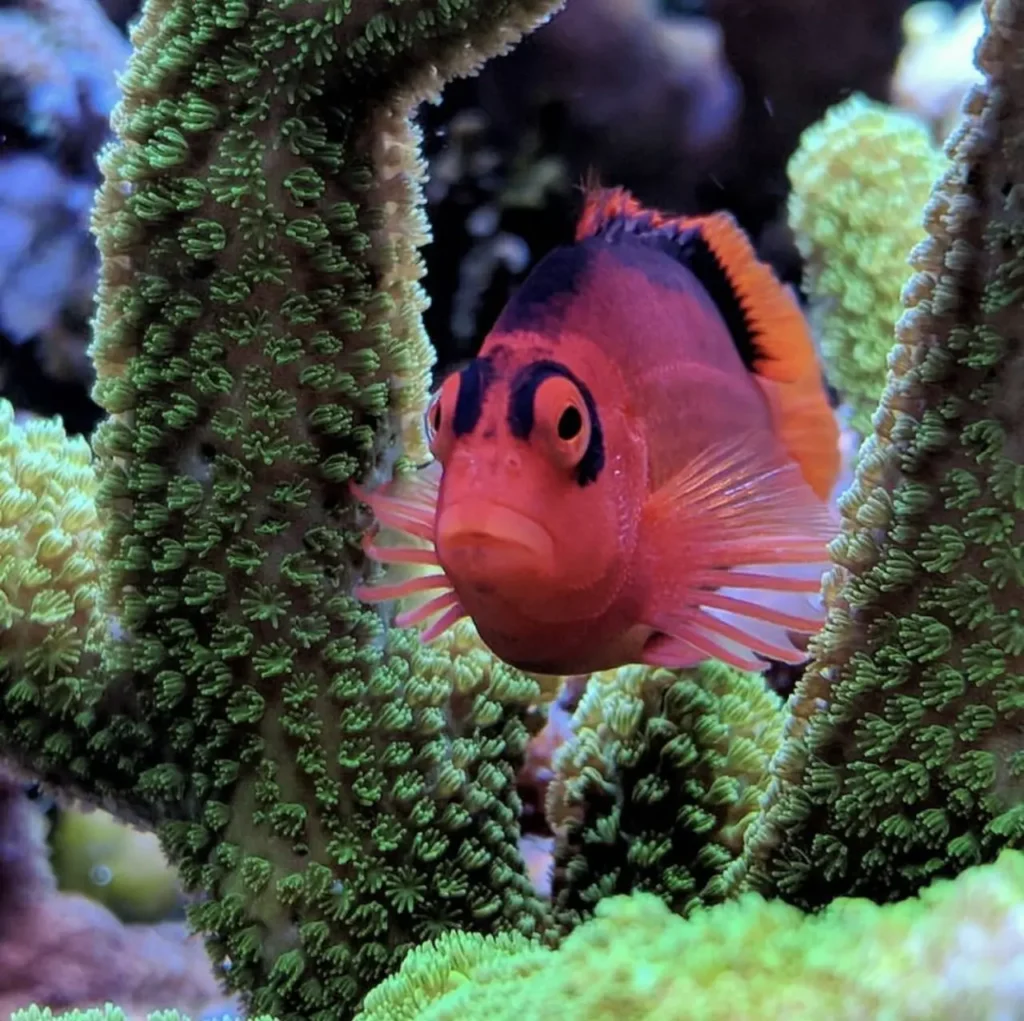
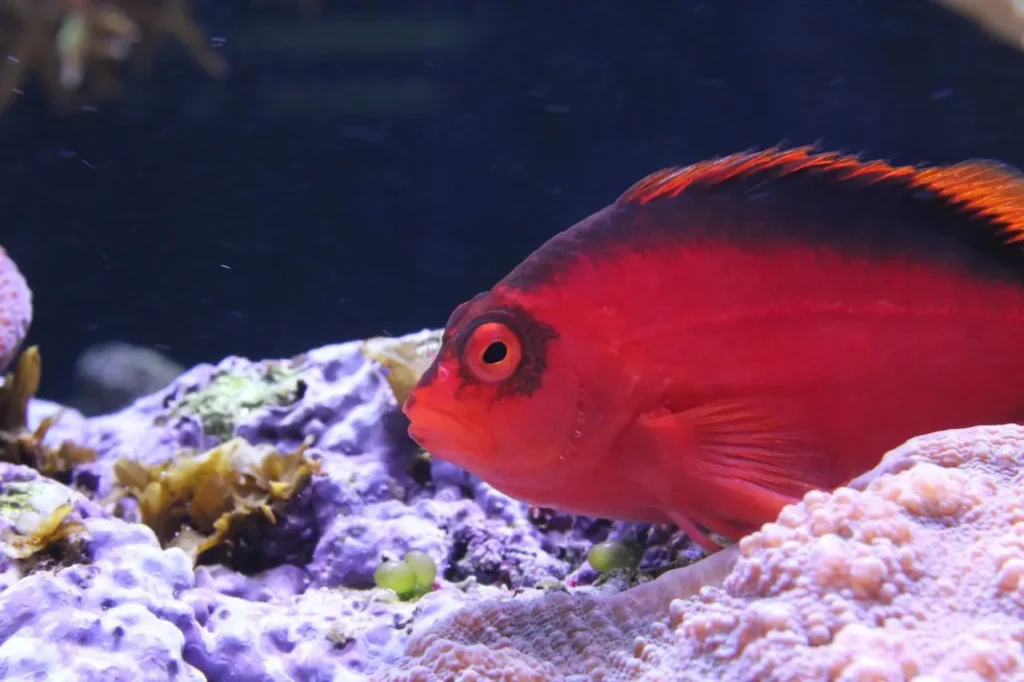
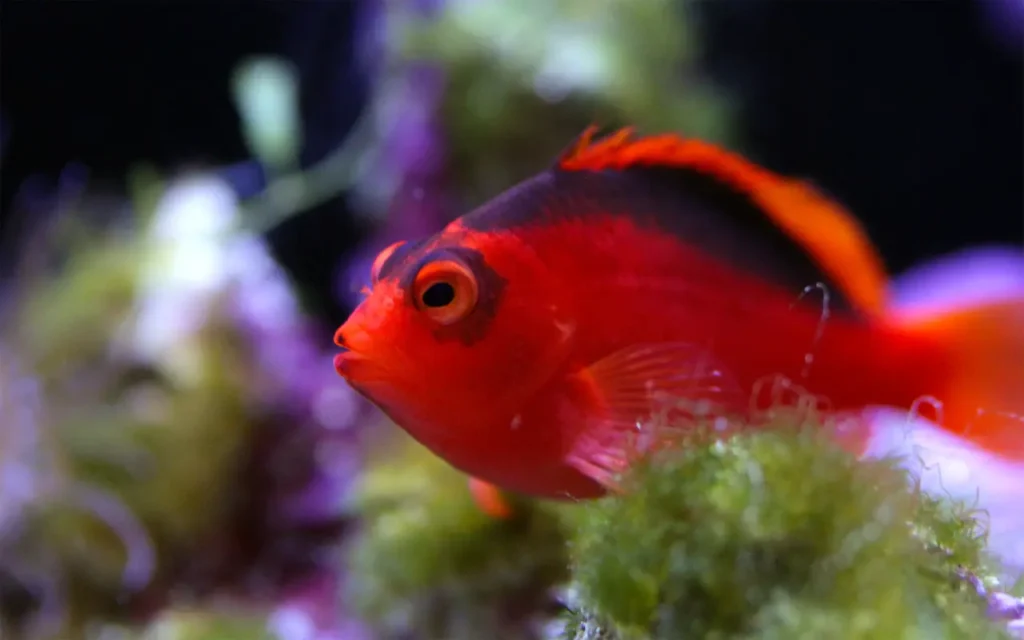
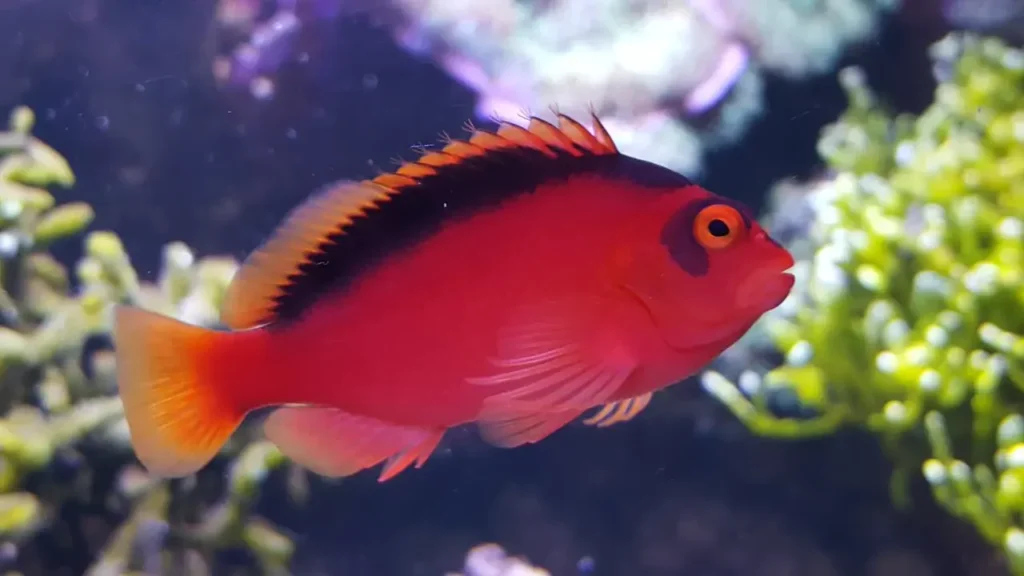
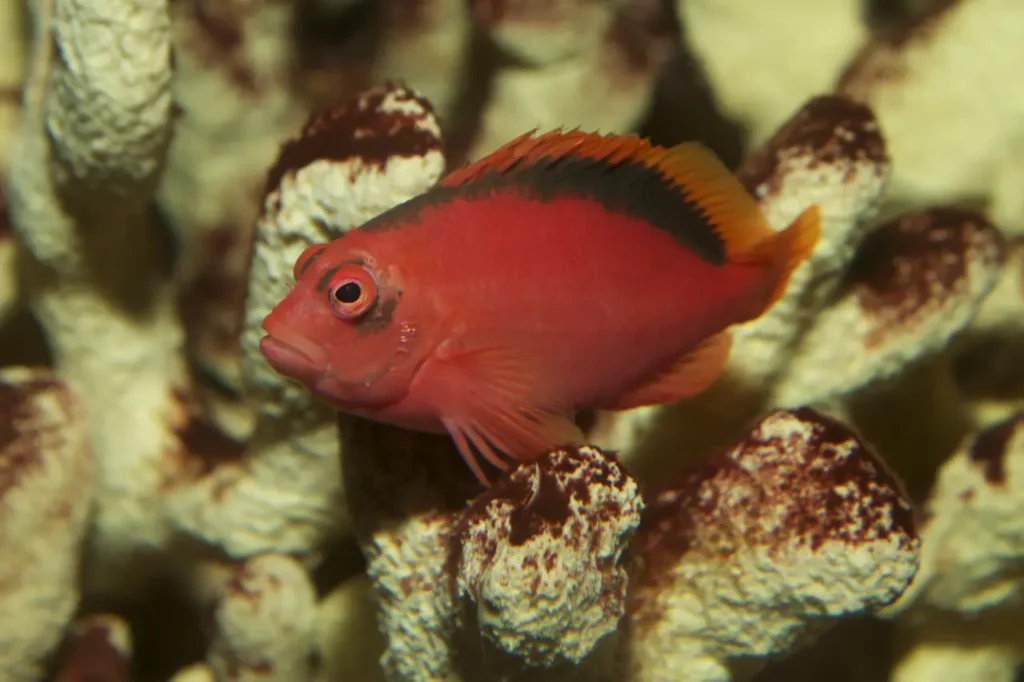
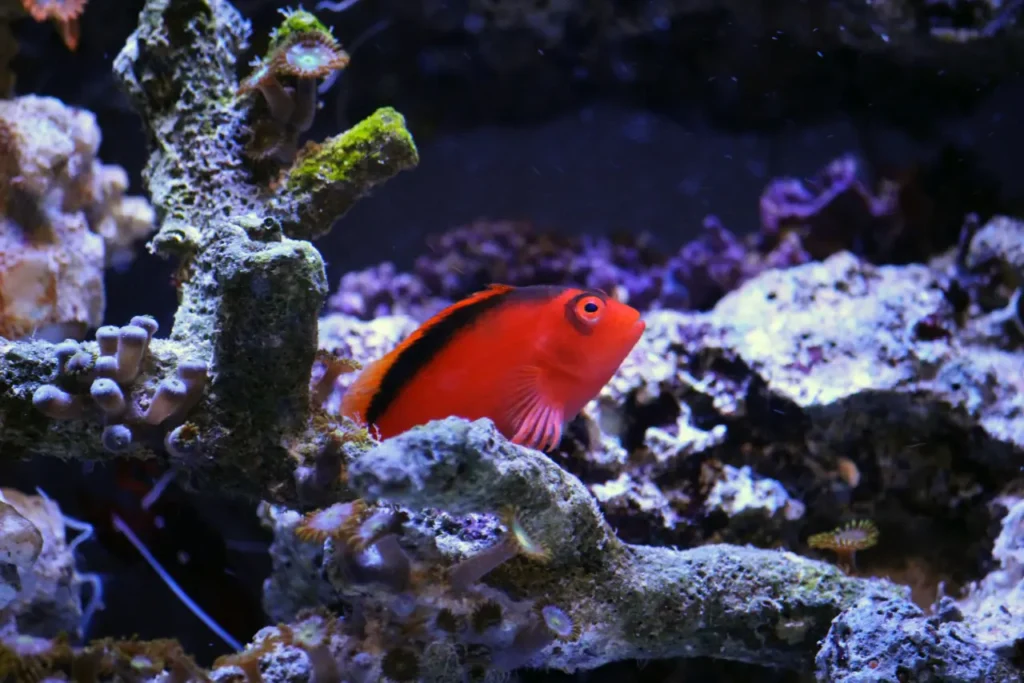
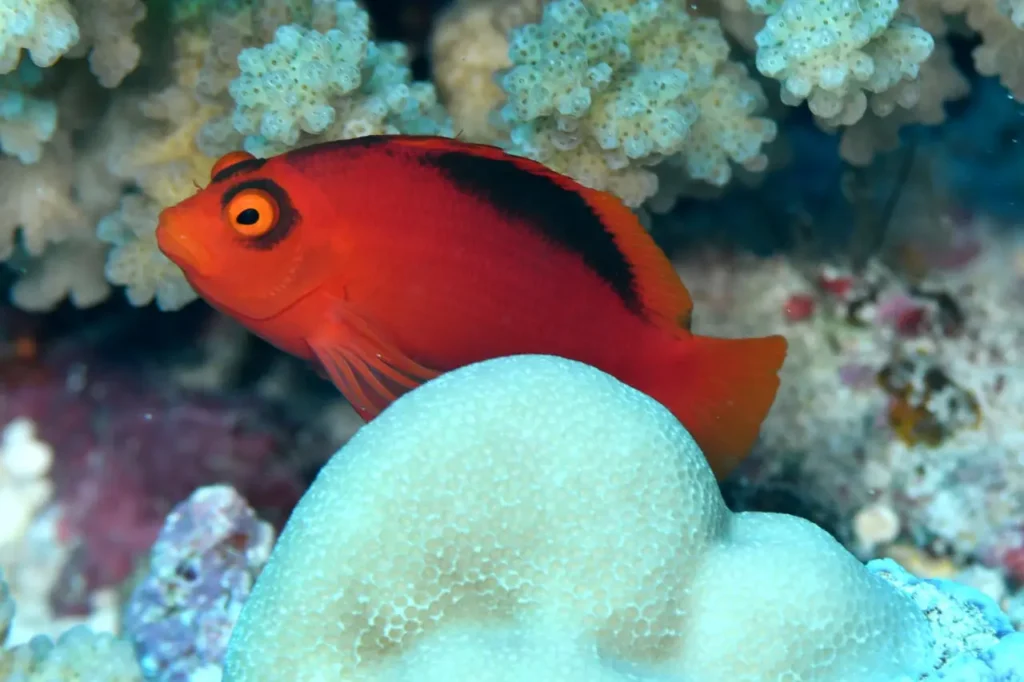
Appearance and Coloration
The Flame Hawkfish, scientifically known as Neocirrhites armatus, is a member of the Cirrhitidae family. It displays a stunning red-orange coloration that resembles a flickering flame, hence its name. The fish has a stocky body with a large head, elongated dorsal fin spines, and intricate patterning on its scales. Flame Hawkfish have long, filamentous extensions on their dorsal fin, adding to their unique and visually striking appearance.
Habitat and Distribution
Flame Hawkfish are native to the warm waters of the Indo-Pacific region, particularly the coral reefs of the Western Pacific Ocean. They inhabit a range of reef environments, including rocky outcrops, coral heads, and crevices. These fish are commonly found at depths of 10 to 100 feet, where they establish territories and perch on coral branches or other elevated structures.
Behavior and Feeding
Flame Hawkfish are primarily solitary creatures and are known for their perching behavior. They use their pectoral fins to grasp onto coral branches or other substrate, allowing them to maintain a prominent position in their territory. From their perch, they scan the surroundings for prey items, including small crustaceans, shrimp, and small fish. When hunting, they dart out to capture their prey with precision and agility.
Color and Camouflage
While the vibrant red-orange coloration of the Flame Hawkfish may seem conspicuous, it actually aids in camouflage within its coral reef habitat. The bright coloration helps the fish blend in with the vibrant hues of the coral, providing a level of protection from potential predators. This adaptation allows the Flame Hawkfish to effectively hide and ambush its prey while remaining relatively inconspicuous.
Conservation and Protection
Flame Hawkfish, like many other coral reef species, face threats due to habitat destruction, pollution, and overfishing. Climate change, with its associated coral bleaching events, also poses a significant risk to the health of coral reefs. Conservation efforts focus on protecting and preserving coral reef ecosystems through initiatives such as marine protected areas, sustainable fishing practices, and raising awareness about the importance of these fragile environments.
Ecological Significance
Flame Hawkfish play a vital role in the coral reef ecosystem. As predators, they help control populations of smaller reef-dwelling organisms, contributing to the overall balance of the reef community. Their presence also adds to the visual diversity and beauty of the underwater landscape, making them a favorite subject for underwater photographers and divers.
Appreciating Nature’s Splendor
Encountering a Flame Hawkfish in its natural habitat is a memorable experience. Their fiery colors, unique perching behavior, and intricate relationship with the coral reefs serve as a reminder of the delicate beauty and interconnectedness of marine ecosystems. Protecting these habitats and the diverse array of species that call them home is crucial for the preservation of these underwater wonders.
The Flame Hawkfish, with its vibrant coloration and captivating behavior, is a true gem of the coral reefs. Its fiery presence brings life and beauty to the underwater world. By understanding and appreciating the ecological significance of the Flame Hawkfish and supporting conservation efforts, we contribute to the preservation of coral reef ecosystems and the preservation of these remarkable creatures for generations to come.
